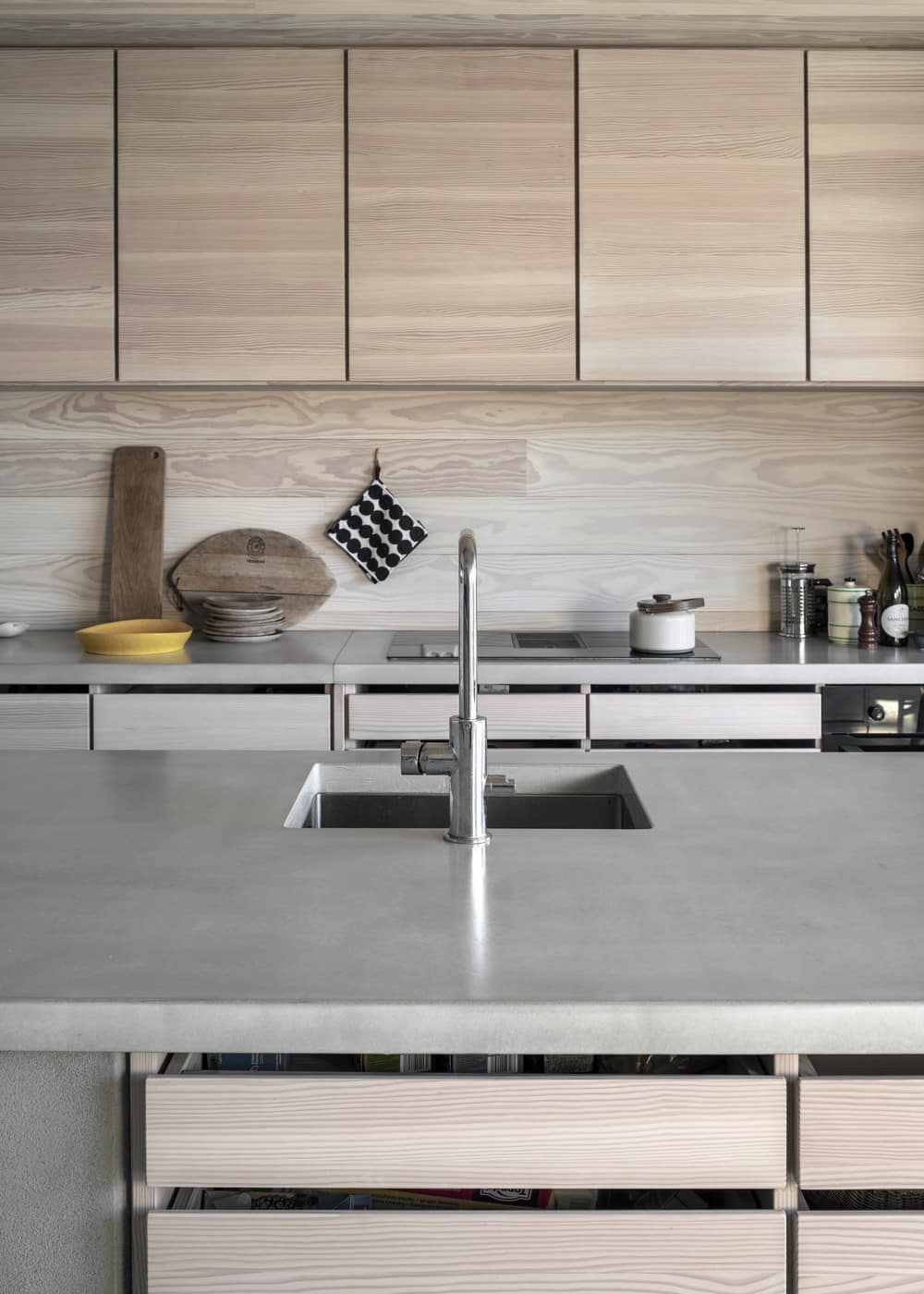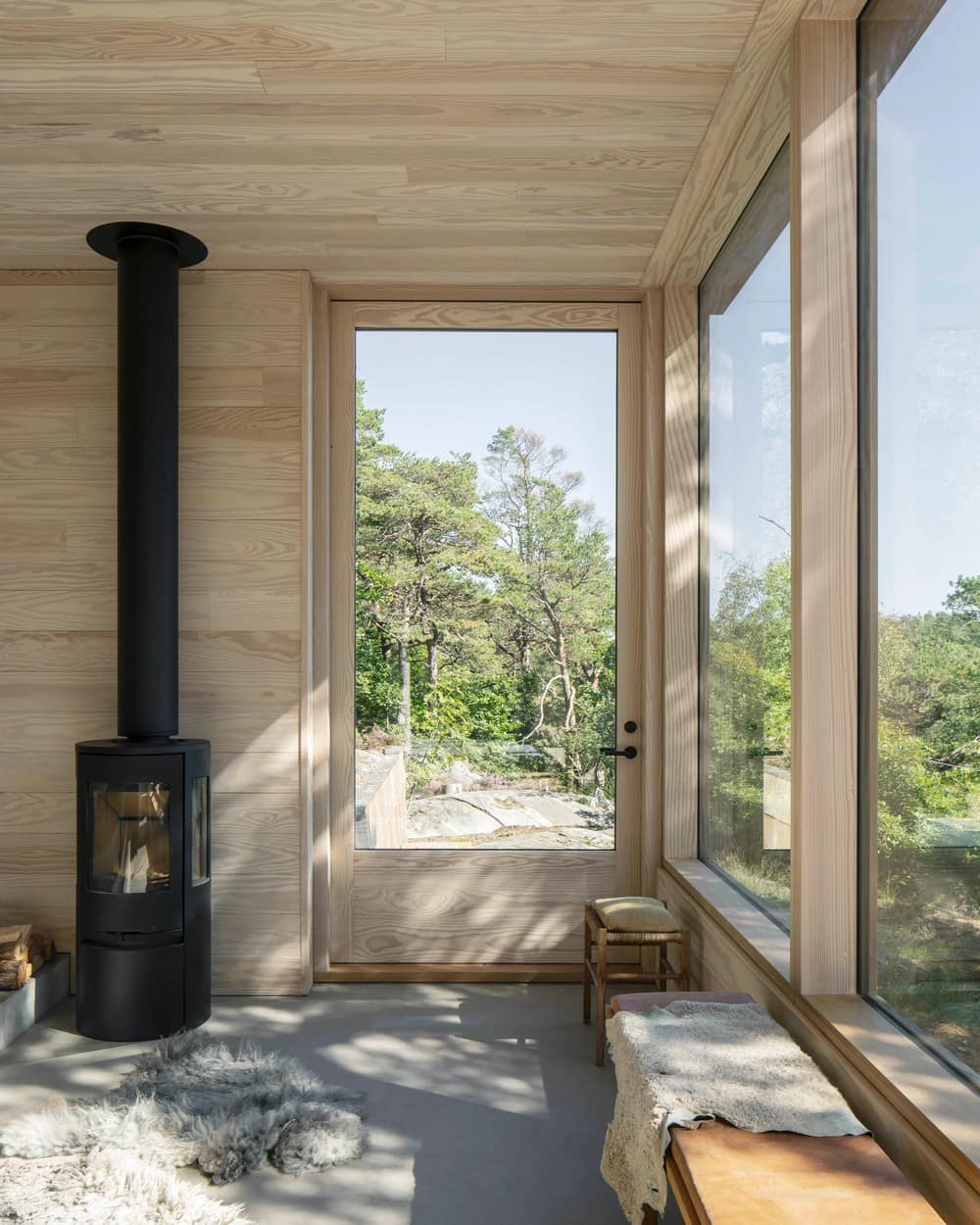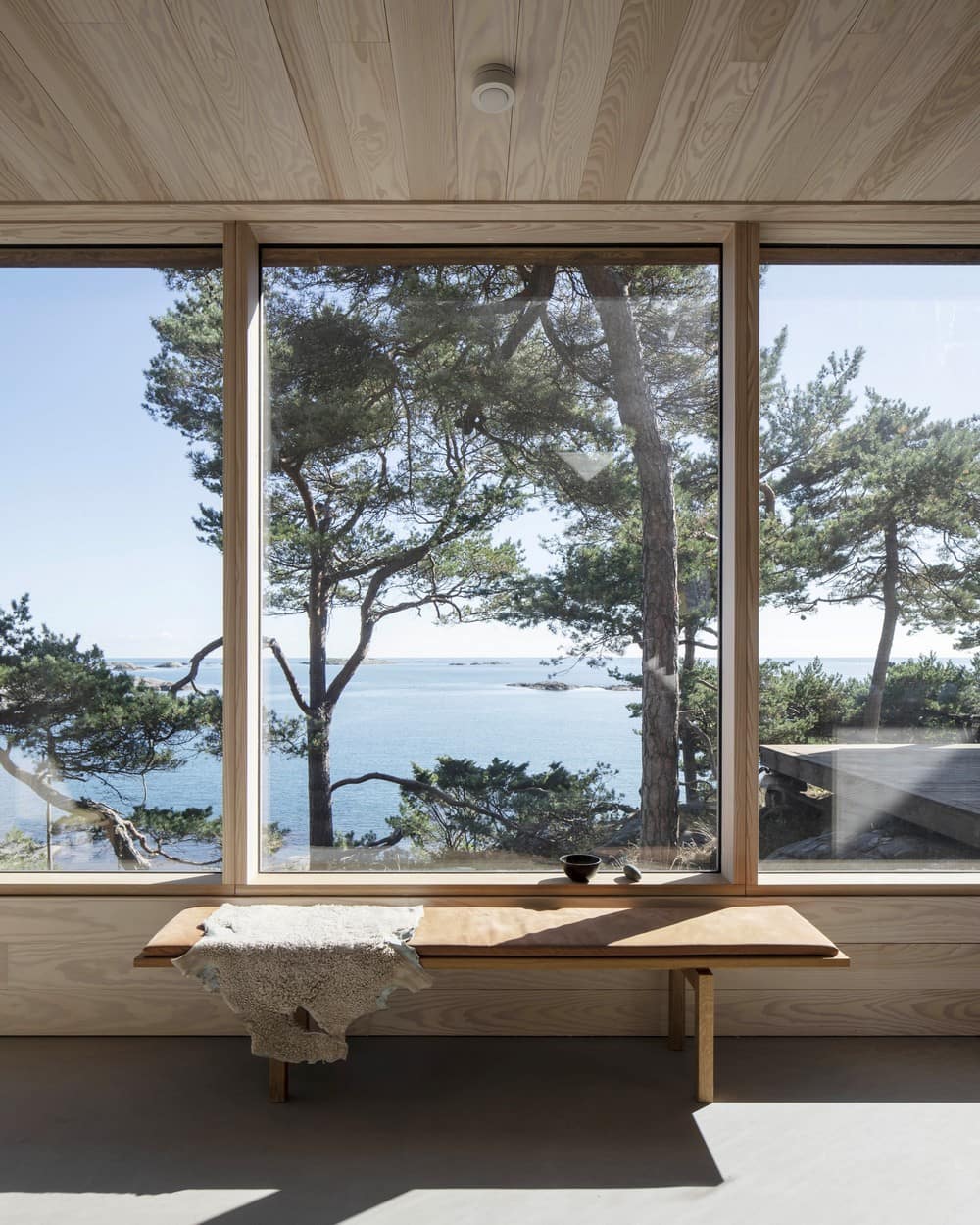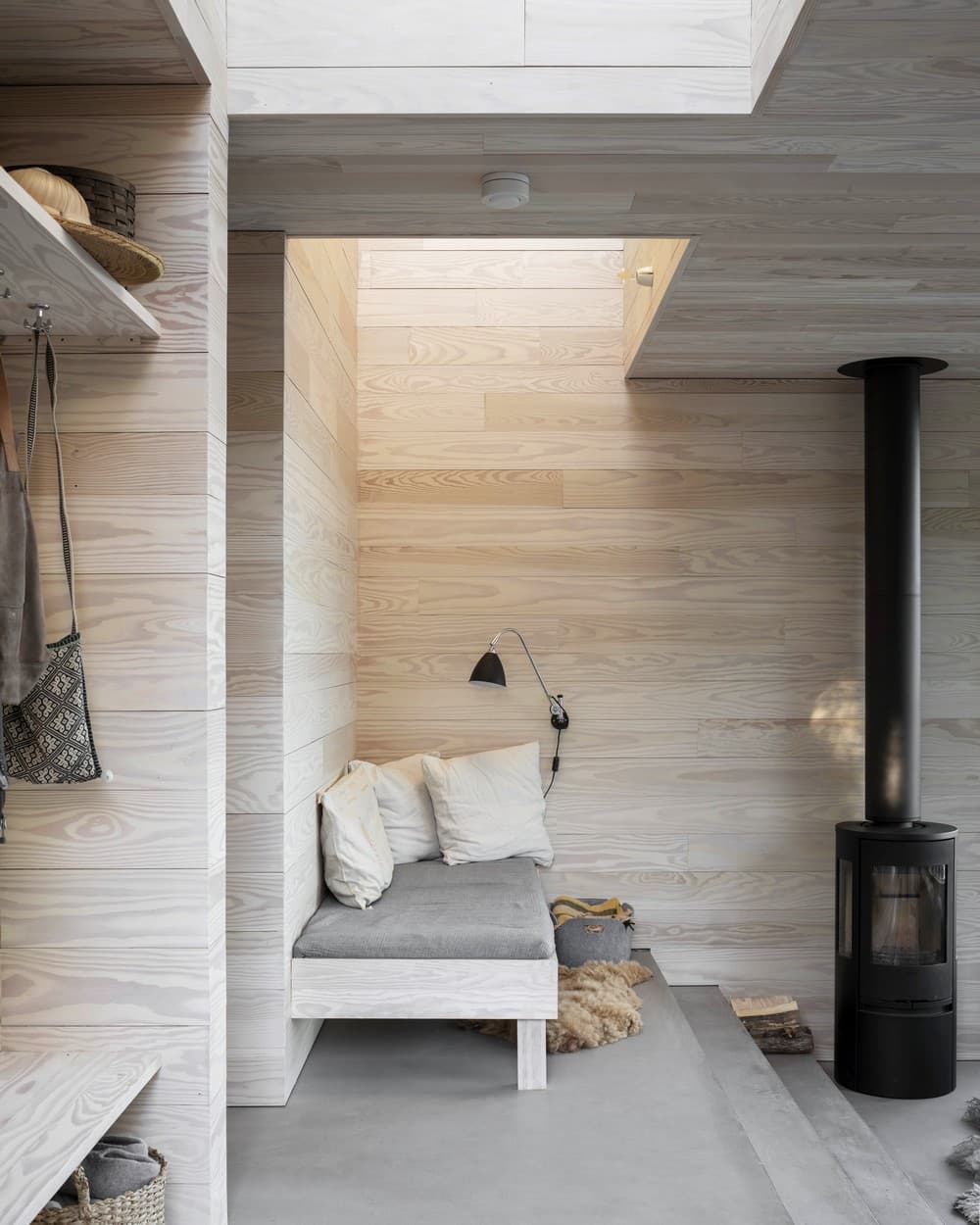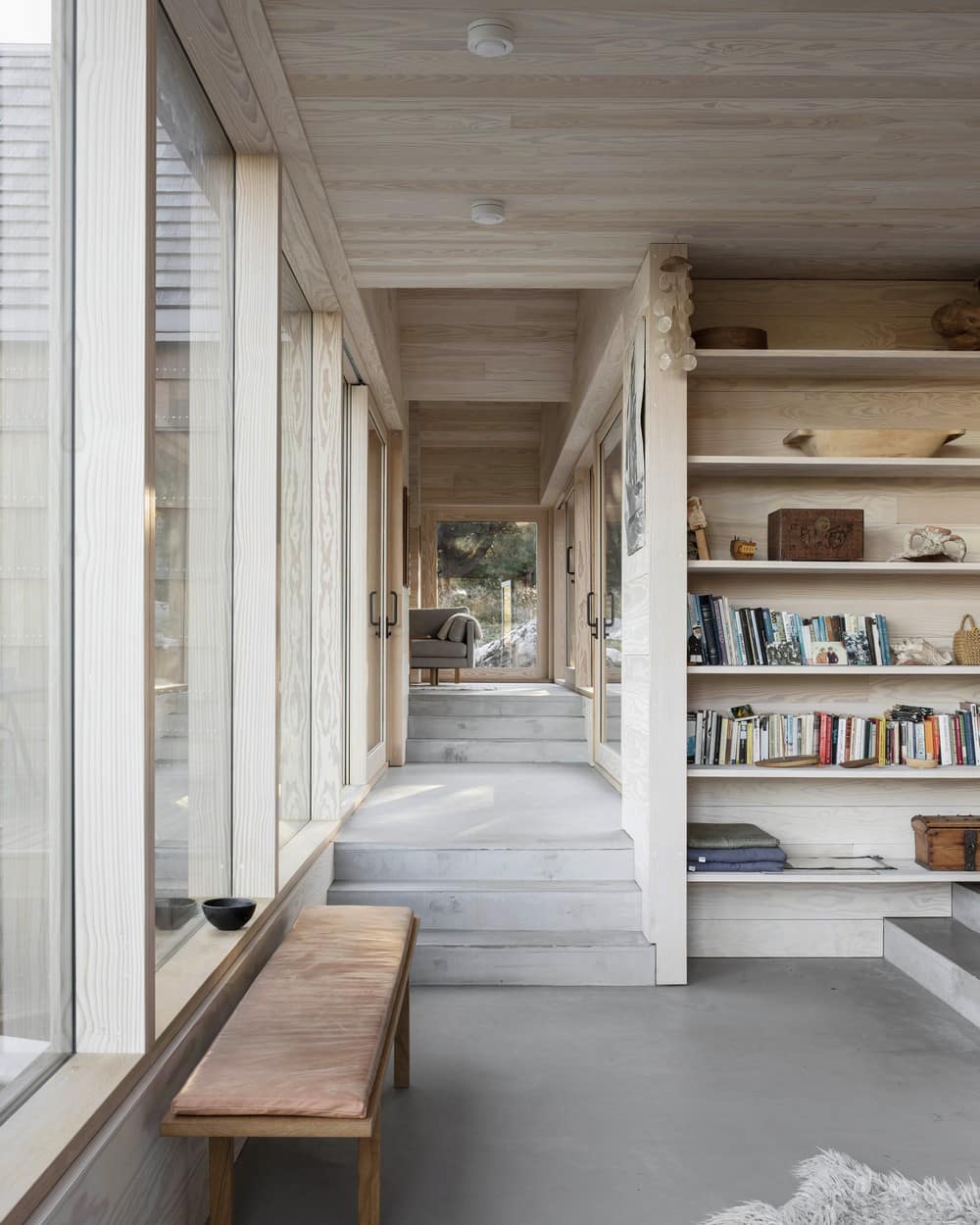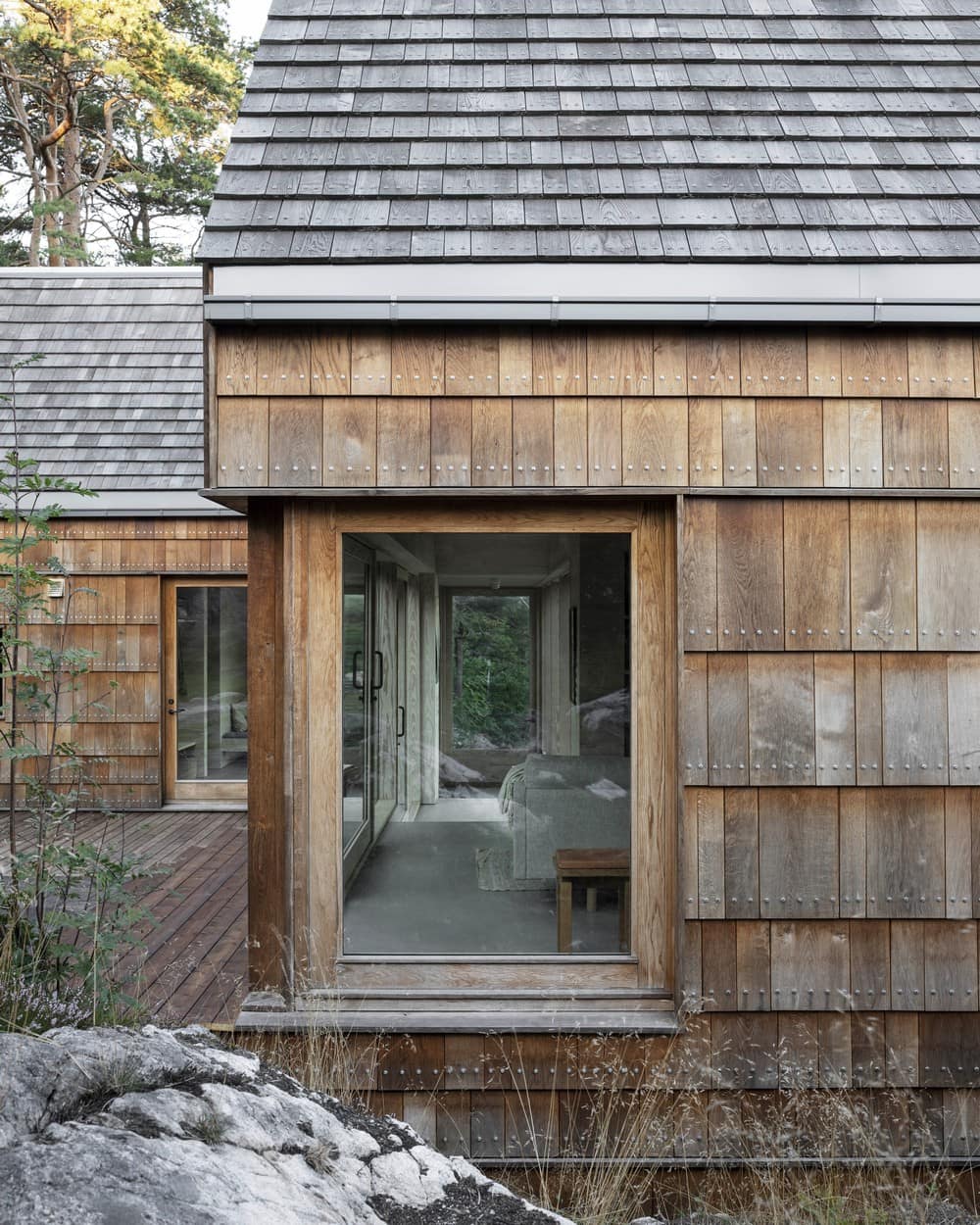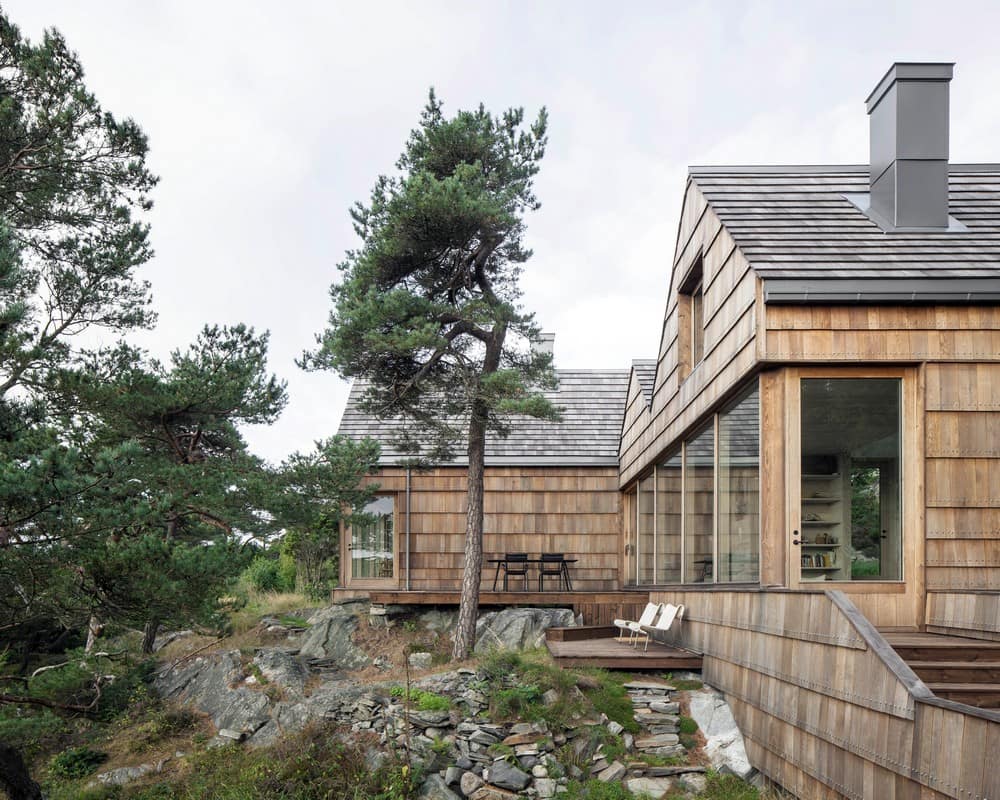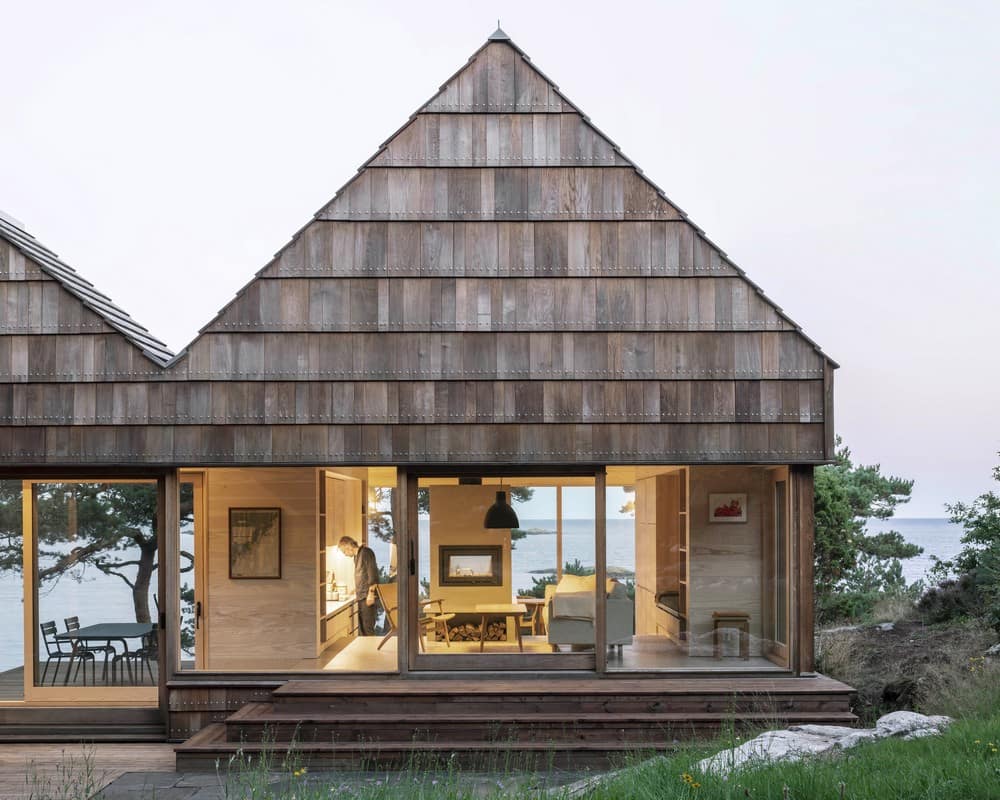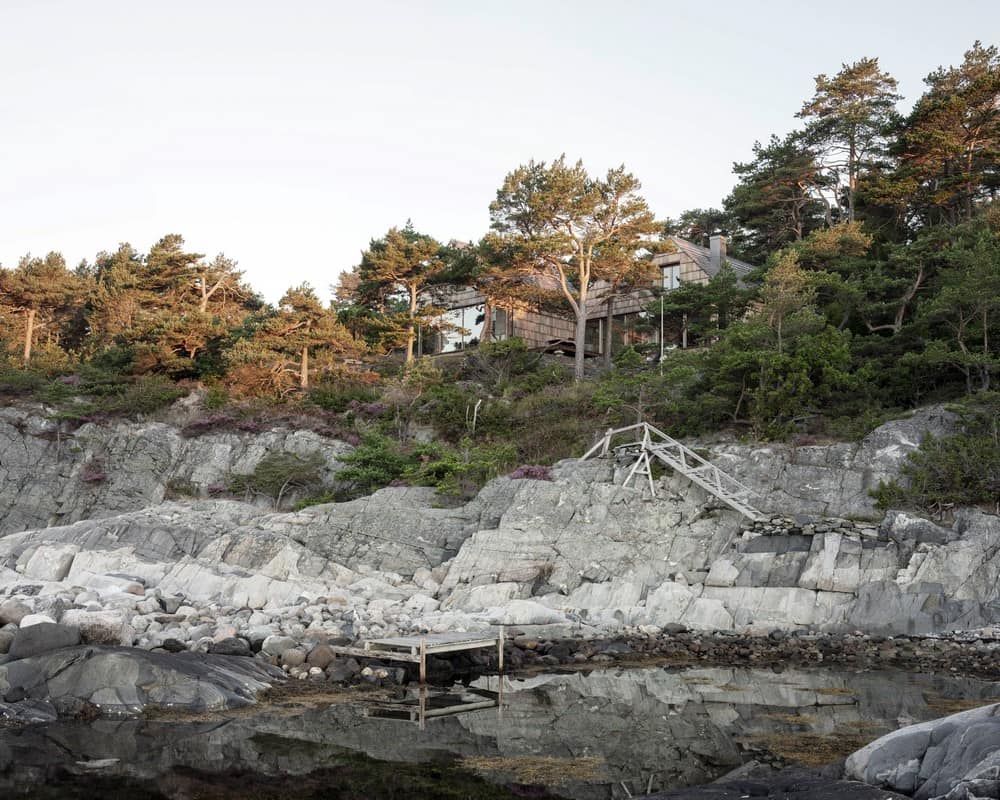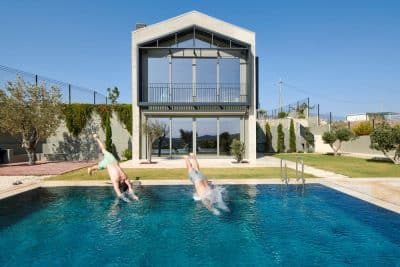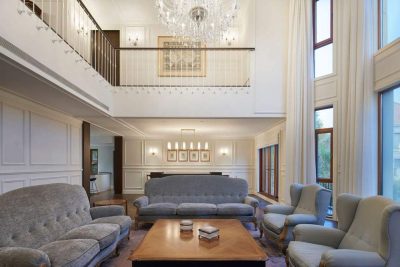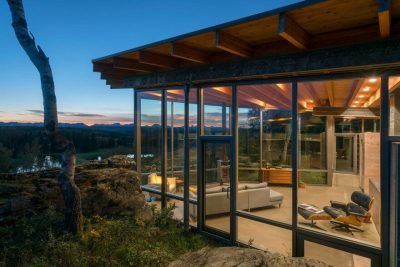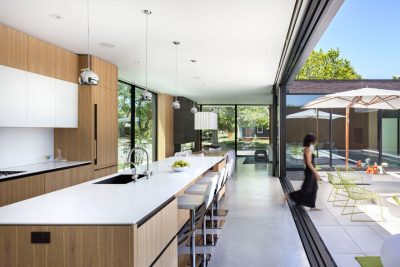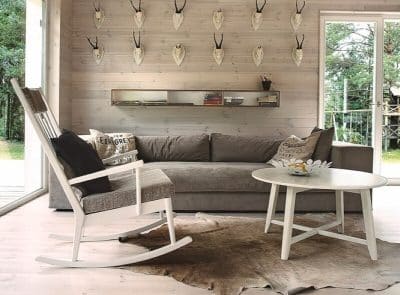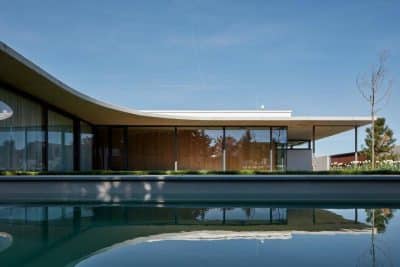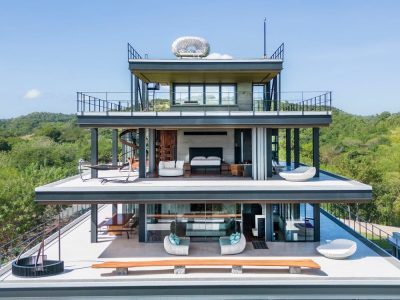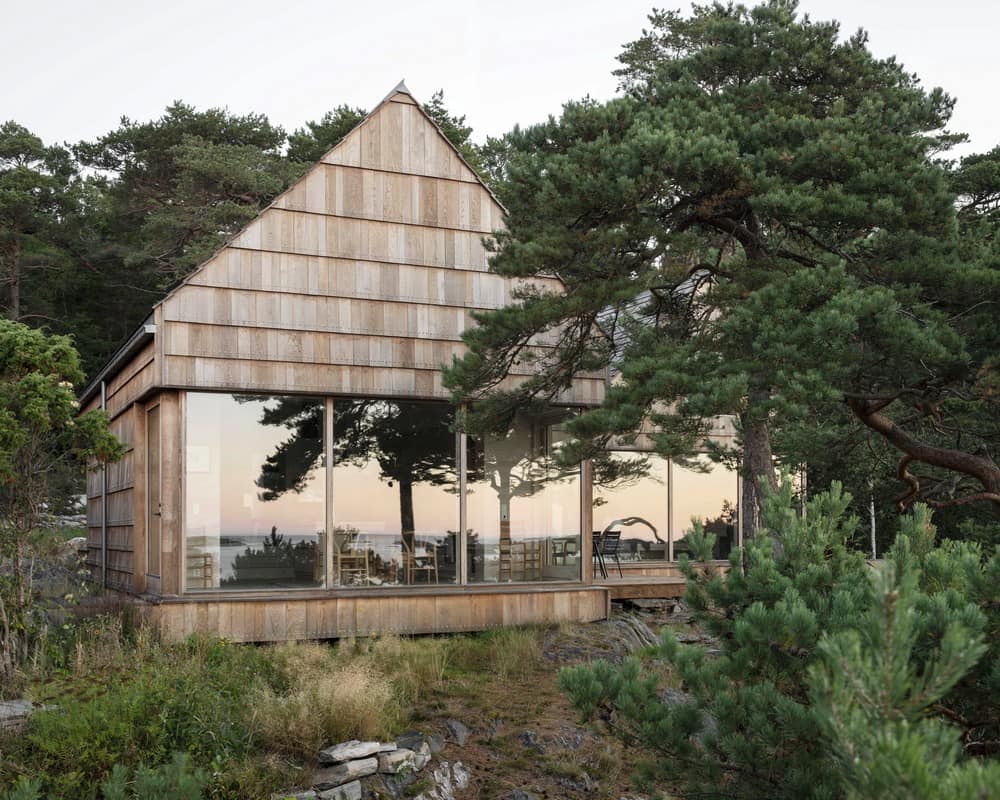
Project: Saltviga House
Architects: Kolman Boye Architects
Lead Architects: Victor Boye Julebak, Erik Kolman Janouch
Location: Grimstad, Norway
Year: 2022
Photographs: Johan Dehlin
In our recent projects and in our teaching and research, we have come across Dinesen materials as both the traditional floors and as a scrap, a leftover, an off-cut from the production of made- to-measure floors. Making and thinking with these leftovers from the production gave rise to a notion of making a building of them as a sympathetic way of using and ennobling scrap materials that would otherwise have been used as firewood. Besides being beautiful the off-cuts are low in embodied carbon and could offer an alternative to more commonly used and more carbon intensive materials.
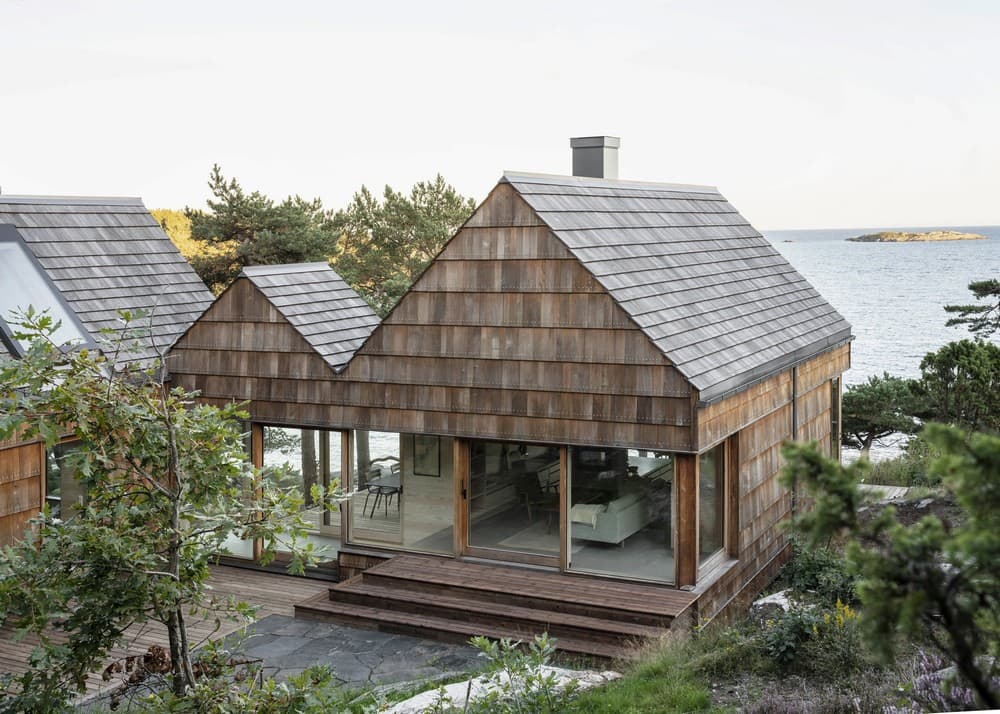
The idea of using the leftovers for a house was developed in a combined strategy of sorting representative pallets of material from the production to classify size, quantity and quality as well as through the building of several 1:1 mock-ups, researching stacking and layering combinations together with technical properties and experiential effects. Differing from traditional split wooden shingles used in Norway, the research into these sawn timber planks resulted in a straight-forward yet complex approach that required traditional material knowledge as well as a considerable process development to make it work in a timely and economical fashion.
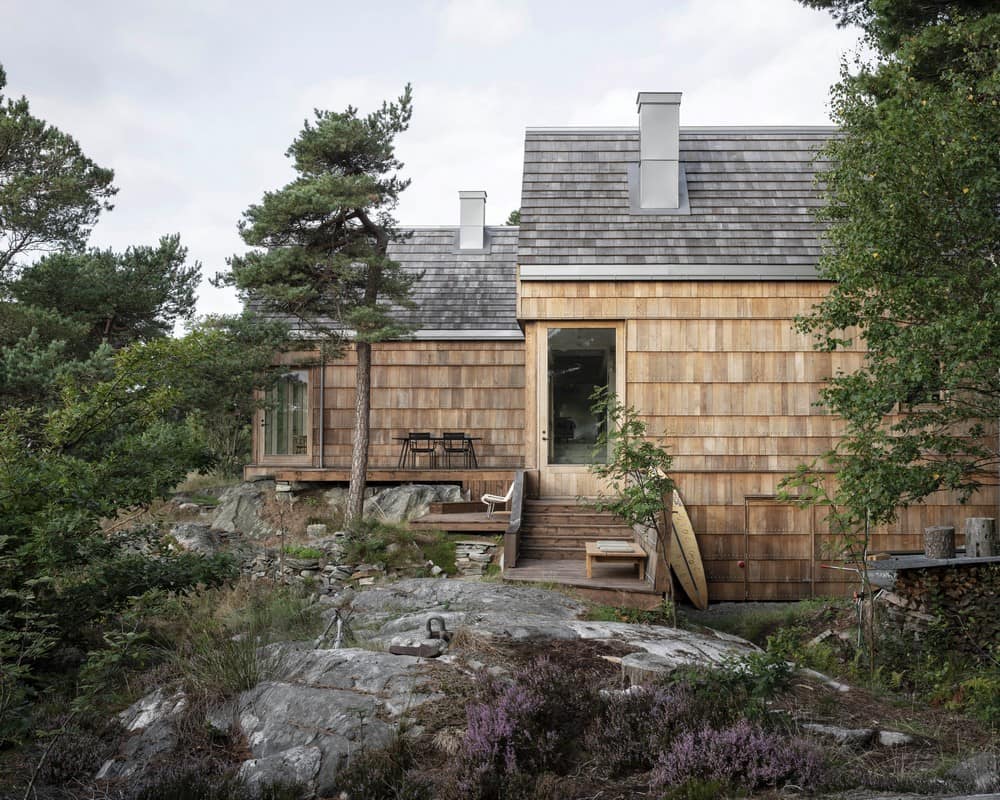
The production and assembly of the timber elements for the building drew on the collective knowledge of the involved carpenters, joiners, and suppliers. In the production, each of the 12.000+ individual oak off-cuts from Dinesen’s floor production were pre-cut to size with minimal waste, pre-drilled, and pre-treated with tar at our carpentry before being transported to the site. In the assembly of the facade on site, each individual oak element required precise handling and 20 000+ stainless steel screws for fastening, reinforcing the robust, assembled and layered character of the cladding.
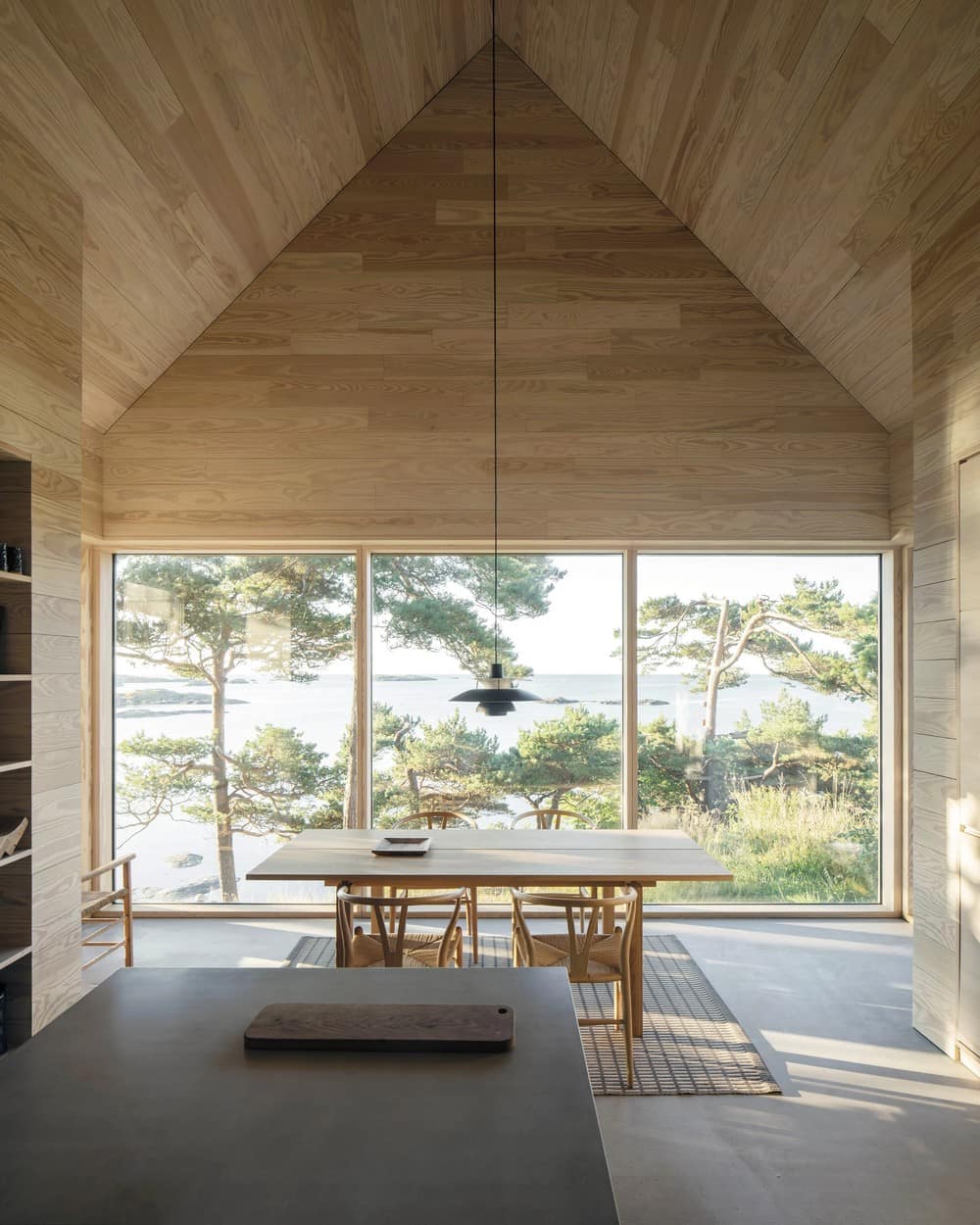
The resulting building negotiates a landscape of rocks, lichen, ferns, conifers and deciduous trees on a bluff, facing the sea of Skagerrak on the south-eastern coast of Norway. Avoiding reshaping the terrain, the Saltviga House is meticulously adapted to the north-east sloping ground, forming three volumes that are situated on five different levels. Outside, the three volumes create two distinct spaces separated by an openable wind-barrier: a courtyard towards the forest that is protected from the wind and an open deck towards the sea which holds views through an existing pruned “window-band” in the conifers.
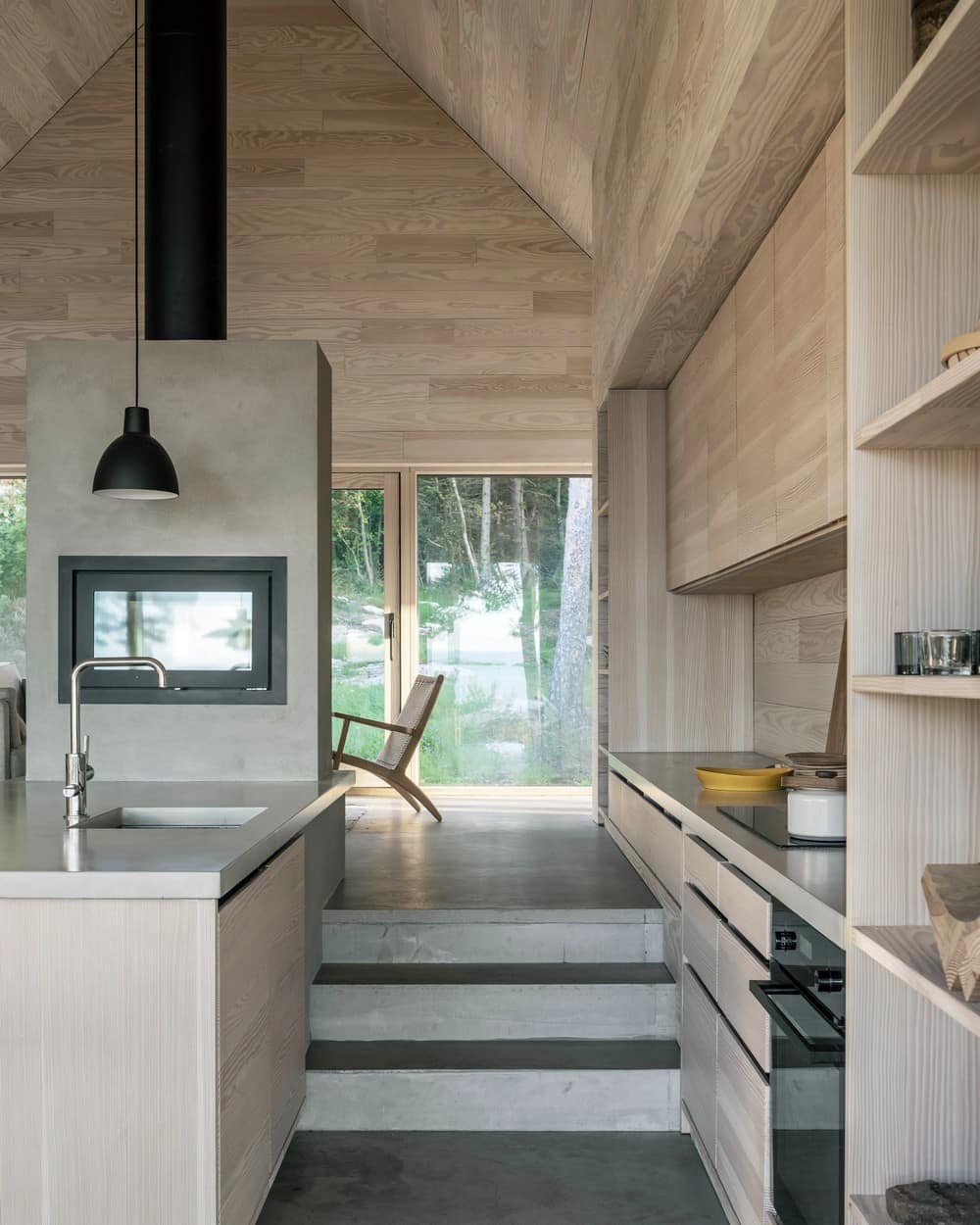
Inside, each space has a distinct volume and ceiling height, with the central hallway giving clear views through the whole house and the windows, stretching the full length of the facade towards the sea, bringing unity and coherence to the different levels. Where the exterior oak cladding will turn silvery-grey over time and blend in with the slate and granite landscape, the interior Douglas cladding is kept in a slightly warmer, whitish hue, balanced by the neutral screed floors.
